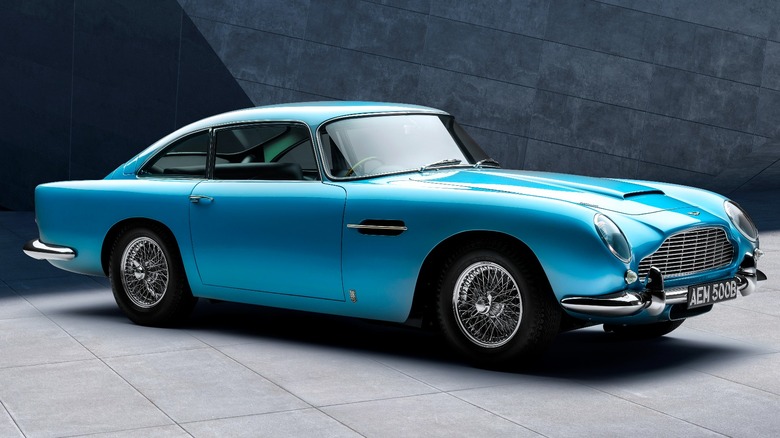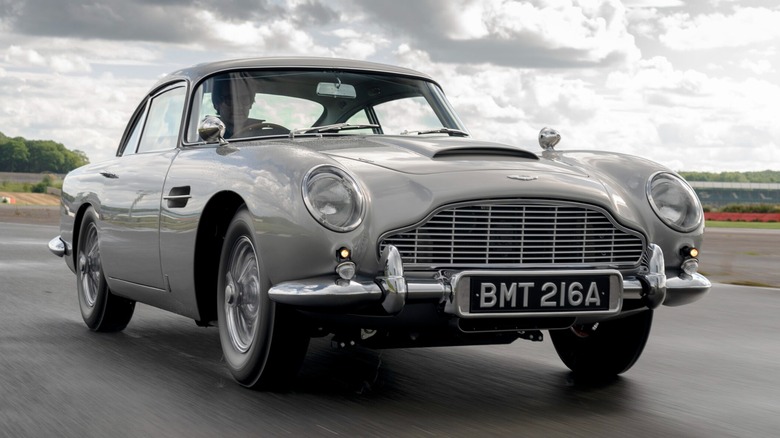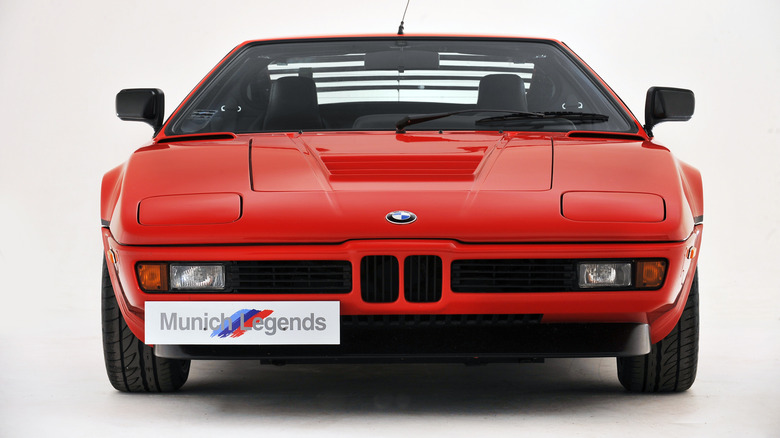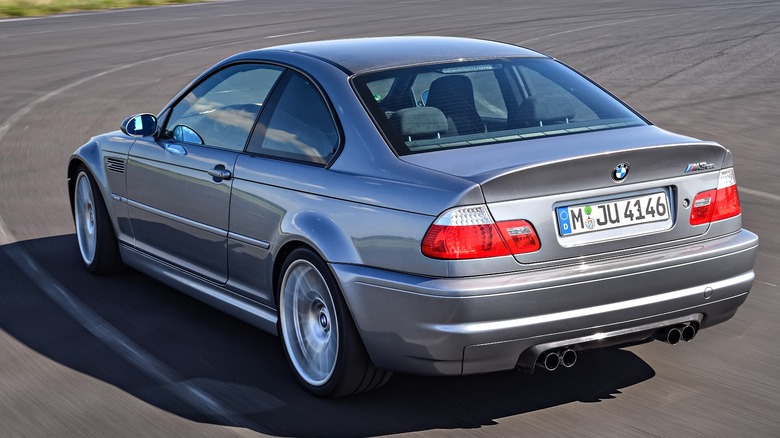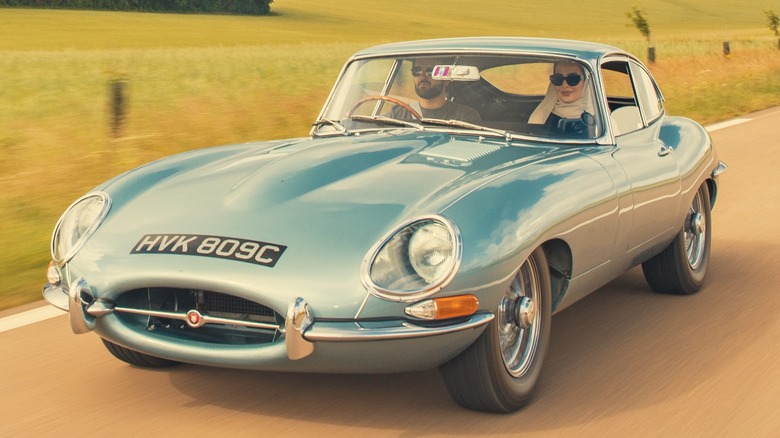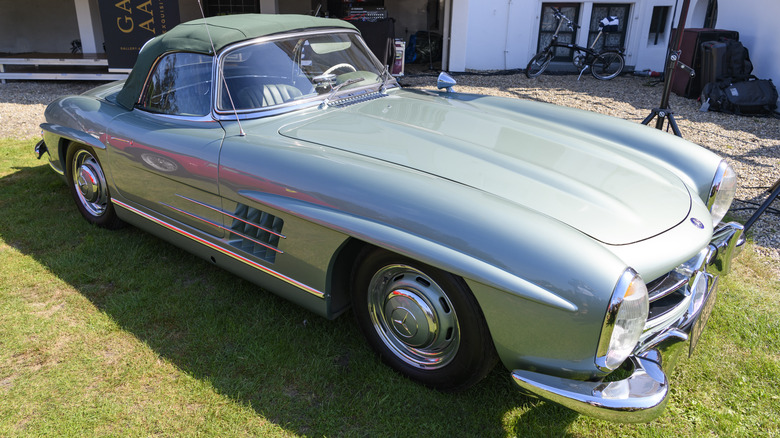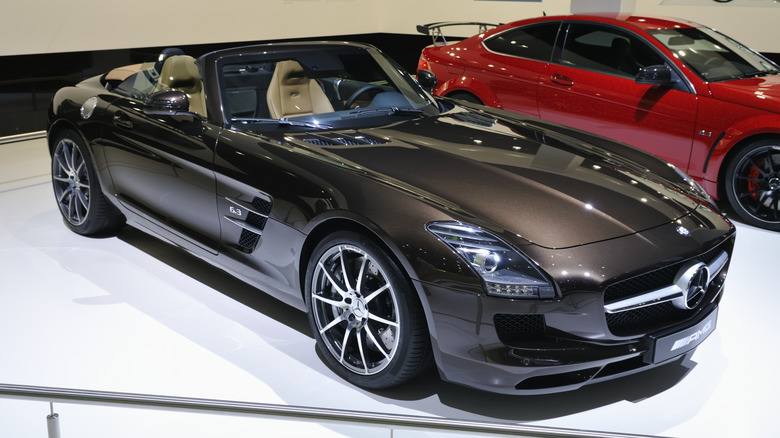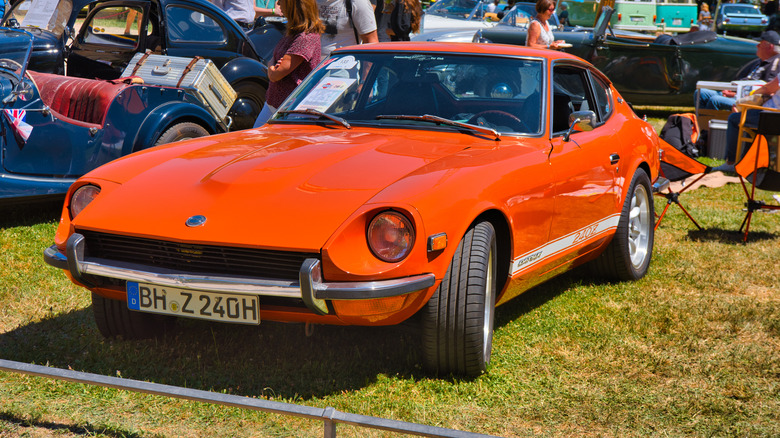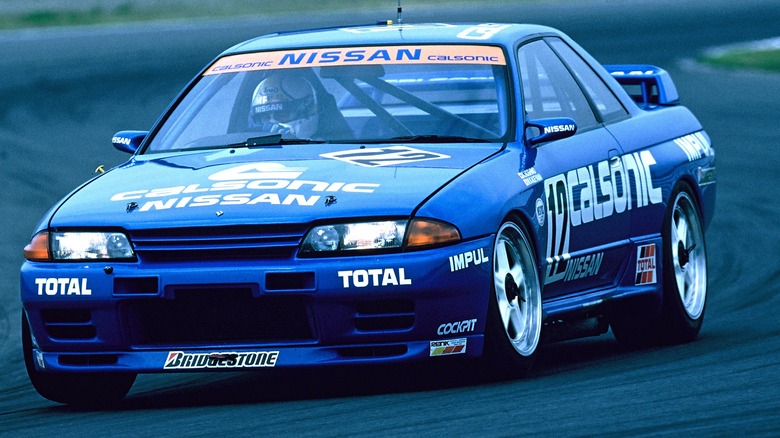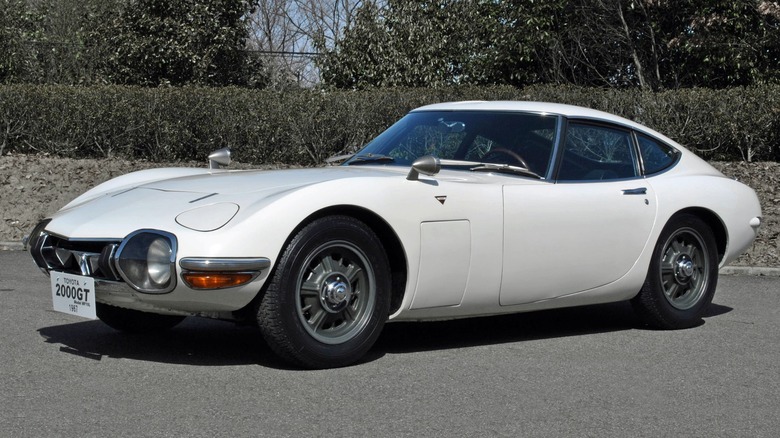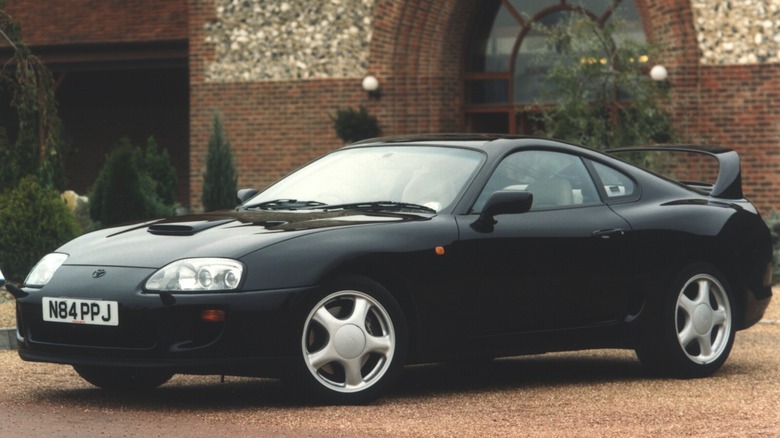10 Legendary Vehicles That Were Powered By Inline-Six Engines
Inline-six engines differ from the brawnier V8 and high-strung four-cylinder cousins by offering the true automotive soundtrack. By cramming six cylinders in a straight line, inline-six engines deliver a surge of power in a smooth symphony.
Thanks to perfect balance and gutsy torque, the inline-six engine layout has been the beating heart of iconic vehicles for over a century. These are among the most iconic vehicles that roared with the soul of an inline-six engine, from the Aston Martin DB5, the car that defined James Bond's cool, to the timeless beauty of the Jaguar E-Type to BMW M's first vehicle, the BMW M1.
This isn't just a history lesson; it is a glimpse into the incredible lineup of vehicles that use the straight-six engine. These vehicles redefined performance and cemented the inline-six's place in automotive history. Here's a deeper dive into these engineering marvels, the unmatched experiences they offer, and everything that makes them special.
Aston Martin DB5
Aston Martin introduced the DB5 in 1963, helping them combat the strong competition in the luxury sports car market. Despite looking like its predecessor, the Series 5 DB4, the DB5 had several equipment, technical, and design changes. The most notable being the more powerful 4.0-liter inline-six engine. This engine was a version of Tadek Marek's twin-cam inline-six, first seen in the DP25 racing car and Aston Martin Lagonda Rapide. In the DB5, the more powerful powertrain produced 278 horsepower and 280 lb-ft of torque. Aston Martin paired the inline-six engine with a full synchromesh ZF five-speed manual transmission. Furthermore, there was also an optional Borg-Werner three-speed automatic transmission. This helped it accelerate from 0 to 60 mph in 7.1 seconds and reach a 150-mph top speed.
Besides its impressive performance, the DB5 had plenty of standard equipment, including chrome wire wheels, full leather trim, electric windows, an oil cooler, twin fuel tanks, wool pile carpets, and reclining seats. The DB5 was also a sensation, enticing celebrities, pop stars, and actors and appearing in James Bond movies. Some of the celebrities who got behind the DB5 included Jay Kay, Robert Plant, Ralph Lauren, Elle McPherson, Mick Jagger, and Sir Paul McCartney.
Over the years, Aston Martin made a few variations of the DB5, including the Vantage and a convertible. The DB5 Vantage had different camshafts and three Weber carburetors, helping it produce 325 horsepower. In 2020, over five decades later, Aston Martin decided to produce the last new DB5, dubbed the DB5 Goldfinger Continuation. This DB5 retained the inline-six engine, producing 286 horsepower. Only 25 models were made, all with one exterior color specification, Silver Birch.
BMW M1
BMW launched the M1 in 1978, the first vehicle from BMW M. The BMW M1 helped shape BMW M and became one of the most famous sports cars in the '70s. The M1 was timeless, thanks to its designer, Giorgio Giugiaro, who gave it a striking wedge shape. Its key traits included the black slats at the rear, flat kidney grills at the front, and folding headlights. Just behind the driver, BMW M fitted a 3.5-liter six-cylinder engine with 277 horsepower and 244 lb-ft of torque.
Paul Rosche helped develop the M1's engine, the M88/1, which featured mechanical injection and four valves per cylinder. This engine paired with a five-speed manual transmission, helping it reach a 165-mph top speed and scamper from 0 to 62 mph in 5.6 seconds. BMW M also developed a racing version, producing an impressive 470 horsepower and nearly reaching a 200-mph top speed. In addition to its impressive performance, the M1 was a lightweight sports car, weighing only 3,100 pounds and boasting a height of just 3.7 inches.
BMW E46 M3 CSL
The E46 M3 CSL was introduced in 2003, and BMW only produced 1,383 units. This was a limited edition of the E46 BMW M3, boasting less weight, improved hardware modifications, and more horsepower. The E46 M3 was in production from 2000 to 2006 and boasted a high-speed concept inline-six engine with 343 horsepower . The S54 engine had a cast iron block, revised camshafts, a scavenging oil pump, and electronic throttle control. This helped continue the success story of the BMW E30 M3, providing enthusiasts with mesmeric sound and pure driving pleasure.
The M3 CSL built on the legacy of the E46 M3, upping the performance of the 3.2-liter S54 engine to 360 horsepower and 273 lb-ft of torque. Unlike the E46 M3, the CSL had a great power-to-weight ratio thanks to BMW's consistent use of lightweight materials like a rear window made of special thin glass, an aluminum hood, and a thin-walled exhaust system. You could also find more lightweight materials in the interior, front apron, intake, and rear diffuser.
In addition, BMW offered optional semi-slick sport tires, helping it gallop from 0 to 62 mph in 4.9 seconds. BMW also fitted a carbon fiber roof, helping lower the M3 CSL's center of gravity. This also made it the first production M car to feature a carbon fiber roof, a feature that's now crucial in BMW M cars. All these materials helped lower the E46 M3 CSL's weight to 3,054 pounds, 243 pounds lighter than the base E46 M3.
Jaguar E-Type
Jaguar first introduced the E-Type in 1961, a product dedicated to following the success of the iconic D-Type. This front mid-engine sports car was revolutionary, especially its stylish bodywork, which helped set it apart from its rivals. In addition to its bodywork, the E-Type also had a centered twin exhaust and faired-in headlights, helping make it one of the most beautiful cars at the time. Jaguar produced the E-Type from 1961 to 1974. During this time, there were three E-Type models: Series 1, Series 2, and Series 3. The Series 1 E-Type was a rear-wheel drive two-seater available as a coupe or convertible. Both versions shared a 3.8-liter six-cylinder engine producing 261 horsepower and 260 lb-ft of torque.
In 1965, Jaguar introduced a larger 4.2-liter six-cylinder 261 horsepower and 283 lb-ft of torque. This version powered all the Series 1 E-Type models, including the longer wheelbase four-seater coupe, which was introduced in 1966. Thanks to the additional torque, the 4.2-liter inline-six enabled the E-Type to scurry from 0 to 60 mph in 7.0 seconds and reach a 150-mph top speed.
This engine also powered the Series 2 E-Type, which Jaguar introduced in 1968. For this version, Jaguar removed the glass headlight covers following directives from the NHTSA. This model also had two electric fans and an expanded grille, helping cool the 4.2-liter inline-six. For the final model, the Series 3, Jaguar ditched the inline-six in favor of a 5.3-liter V12 engine with 272 horsepower and 304 lb-ft of torque. This version was quicker than the inline-six, managing a 0 to 60 mph run of 6.4 seconds.
Mercedes-Benz 300 SL
Mercedes-Benz produced the 300 SL (W198) from 1954 to 1962. Only 3,258 of the 300 SL models were made, all featuring the M198 engine. When Mercedes-Benz introduced the 300 SL it exuded innovation and elegance. The 300 SL was the first four-stroke production passenger vehicle to feature direct fuel injection. Mercedes also added dry sump lubrication, a performance feature that guaranteed adequate oil distribution when cornering. Its breathtaking 3.0-liter inline-six engine produced 220 horsepower and 279 lb-ft of torque, helping the 300 SL teach a 155-mph top speed to make it the fastest production car at the time.
The 300 SL inherited the lightweight design of the 1952 Mercedes-Benz racing sports car. It had a light spaceframe, weighing just 110 pounds while offering maximum rigidity. Since the frame left no space for conventional doors, Mercedes-Benz engineers solved the issue by introducing gullwing doors. In addition to the lightweight frame, the 300 SL had an aluminum trunk lid, doors, hood, and dashboard. The 300 SL coupe was available until 1957, after which Mercedes-Benz introduced the 300 SL Roadster.
The 300 SL Roadster featured a more potent version of the M198 engine, producing 240 horsepower and 217 lb-ft of torque. Even though the SL nameplate still lives on in the Mercedes-Benz lineup, the modern Mercedes-AMG SL variants use a four-cylinder engine or a more potent twin-turbocharged V8. Despite their engine choices, these sports cars have better performance compared to the '50s SL, with the four-cylinder powered Mercedes-AMG SL 43 producing 375 horsepower and 354 lb-ft of torque while the V8-powered SL 63 boasts 577 horsepower and 590 lb-ft of torque.
Mercedes-Benz C36 AMG
Mercedes first introduced the C36 AMG in 1993. This was the first vehicle born from the Mercedes-Benz and AMG agreement, boasting a full Mercedes-Benz warranty. The AMG division worked on the W202 C280, extensively revising the engine and chassis. This made the C36 AMG a high-performance version of the W202 C-Class. Under its hood sat a 3.6-liter inline-six engine with 276 horsepower and 284 lb-ft of torque. This helped Mercedes compete with BMW's E36 M3, the first BMW M3 to use a six-cylinder engine.
The C36 AMG's engine received many refinements, including a reconfigured crankshaft torsional damper, custom-made pistons, a larger stroke, modified oil spray nozzles, and modified valve timings. These changes helped increase the overall output of the 3.6-liter six-cylinder engine by 82 horsepower over the C280's 2.8-liter inline-six. The unique touch of AMG also helped the C36 rocket from 0 to 60 mph in 6.4 seconds and finish the quarter mile in 14.7 seconds. In addition to its impressive performance, the C63 AMG excelled on the track, helping Klaus Ludwig take the DTM crown in 1994.
Nissan Fairlady 240Z
The Nissan Fairlady 240Z was a nimble sports car with a pretty design and a potent 2.4-liter inline-six single overhead cam engine. This 240Z was the successor to the already impressive first-generation Fairlady Z. Nissan launched the Fairlady Z in 1969 and later followed with the 240Z in 1971, ready for the export market. The 240Z's inline-six engine paired with a four-speed manual as standard, but Nissan also offered an optional three-speed automatic transmission. This engine produced 212 horsepower and 177 lb-ft of torque, sending it all to the rear wheels. While this isn't much performance in the modern era, it was enough to help the Fairlady 240Z compete with rivals like the Opel GT, MGB GT, and Porsche 914.
The 240Z also succeeded in rallying, getting a podium in the 41st Rallye Monte-Carlo in 1972 in the hands of R. Aaltonen and J. Todt and winning the 21st East African Safari Rally in 1973 in the hands of Shekhar Mehta and Lofty Drews. Nowadays, the Z nameplate retains the iconic character of its predecessors and a six-cylinder engine. However, since the 300ZX, the iconic Z lineup switched from the inline-six to a more potent V6 engine. For the 2024 model year, the Nissan Z uses a twin-turbocharged 3.0-liter V6, producing 400 horsepower and 350 lb-ft of torque.
Nissan Skyline GT-R R32
Nissan's R32 Skyline GR-R was the eighth-generation model introduced in 1989. This marked the precursor to the modern GT-R, boasting the famed RB26DETT engine and ATTESA E-TS all-wheel drive system. The RB26DETT was a twin-turbocharged 2.6-liter inline-six DOHC engine producing 276 horsepower and 260 lb-ft of torque. This engine had four valves per cylinder, two ceramic Garret turbochargers, and dual belt-driven overhead camshafts. It worked alongside a five-speed manual transmission, squeezing the power to the four wheels.
In addition, Nissan also fitted the R32 GT-R with a four-wheel multi-link suspension and four-wheel steering, helping give it responsive steering and handling. These upgrades helped make the R32 GT-R one of the best sports cars in the world, amassing 29 victories from 1990 to 1993 at the Japan Touring Car Championship. In just five years of its production, the R32 GT-R had received a high reputation overseas, including at the Spa Francorchamps 24 Hours race, Bathrust 1000, and Australian Touring Car Championship.
Its racing repertoire also cemented its status as a fan favorite, resulting in its inclusion into the Gran Turismo game franchise. The modern GT-R, the R35 Nissan GT-R, retains the characteristics of the R32 GT-R, including a more advanced ATTESA ET-S all-wheel-drive system and a more powerful twin-turbocharged six-cylinder engine. While it no longer uses an inline-six engine, the V6 replacement produces 565 horsepower and 476 lb-ft of torque, sending it to all four wheels through a six-speed dual-clutch automatic.
Toyota 2000 GT
The Toyota 2000GT was the brand's range-topping grand tourer and Japan's first supercar. While Toyota produced the 2000GT in 1967, it had teased the first 2000GT prototype at the 12th Tokyo Motor Show in 1965. It was an instant sensation upon its introduction, especially due to its unique design by Satoru Nozaki. In 1966, Toyota aimed to build the hype around the 2000GT, entering it into several high-performance races, including Speed Trials at the Yatabe High-Speed Testing Course.
By the end of this event, the 2000GT had set 13 new international records for endurance and speed and smashed three world records. This proved that Toyota and Yamaha's advanced technologies were reliable and effective. The 1967 2000 GT was a low-volume model with unheard-of specification levels and exotic materials. That's thanks to Toyota's collaboration with Yamaha. It contained magnesium alloy wheels and four-wheel independent suspension, features never seen before in a Japanese production vehicle.
Under its hood sat a 2.0-liter DOHC inline-six engine derived from the SOHC unit in the Toyota Crown. It produced 148 horsepower and paired with a five-speed manual transmission, allowing the 2000GT to scurry from 0 to 62 mph in 8.6 seconds and reach a 136-mph top speed. Toyota ended production of the 2000GT in 1970, manufacturing 351 units. Despite being no longer in the market, Toyota still tries its best to keep the 2000GT on the roads, with TRD promising to reproduce spare parts as the GR Heritage Parts Project.
Toyota Supra A80
Toyota unveiled the A80 at the 1993 Chicago Motor Show. This was the fourth generation Toyota Supra, developed under Isao Tsuzuki's guidance. Unlike its predecessors, the A80 had a flowing design with a long, low hood line like the '60s 2000GT. That was thanks to the Lexus SC platform, a more upscale coupe. Besides its redesign, Toyota also focused on building a high-performance sports car, offering it with two engines: the 2JZ-GE and 2JZ-GTE.
The 2JZ engine was a 3.0-liter straight-six engine available in its naturally aspirated form or with two turbochargers. The base versions used the naturally aspirated 2JZ-GE engine, producing 220 horsepower and 209 lb-ft of torque. The twin-turbocharged 2JZ-GTE versions upped this output to 320 horsepower and 315 lb-ft of torque. The NA models paired with a five-speed manual, while the turbos had a new six-speed Getrag manual transmission. Toyota also offered an optional four-speed automatic transmission for both models.
The A80 engineers focused on the 'less is more' concept, managing to lose 220 pounds over the predecessors. This was due to using lightweight materials like an aluminum hood, transmission and oil pans, targa top, and front crossmember. The lightweight nature and potent six-cylinder engine allowed the A80 to become one of the most successful Supra variants. It was a dominant force in Japan and other parts of the world, including the 24 Hour of Le Mans, Swiss Mountain Races, Pikes Peak, and All-Japan Grand Touring Car Championship.
